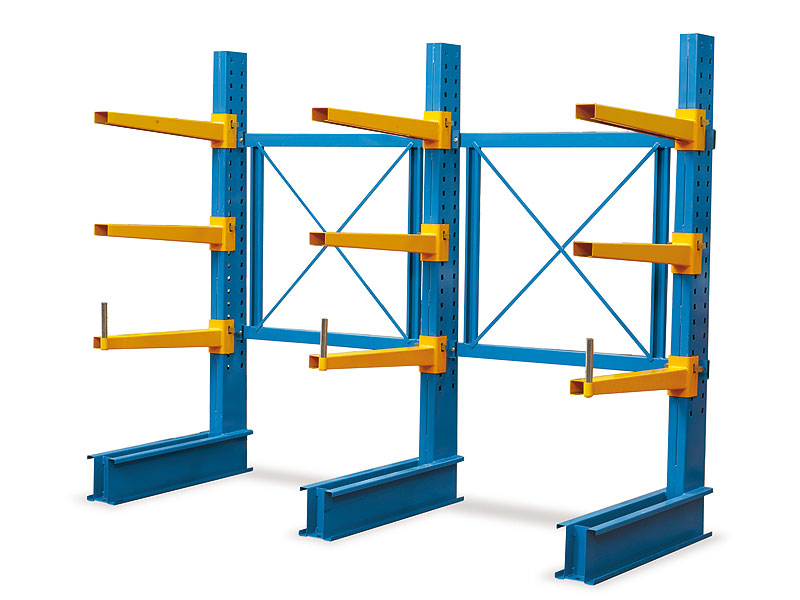Certified And Compliant Racking And Storage In Australia
- - Category: Home Business
- - 08 Jun, 2023
- - Views: 189
- Save
Racking and storage systems play a crucial role in warehouses, distribution centers
Racking and storage systems play a crucial role in warehouses, distribution centers, and various industrial facilities across Australia. These systems provide efficient and organized storage solutions, optimizing space utilization and facilitating streamlined operations. However, it is vital to prioritize safety and compliance when implementing racking and storage solutions to protect workers, products, and property. This article delves into the importance of certified and compliant racking and storage systems in Australia, highlighting the key regulations and standards governing their installation, maintenance, and usage.
The Need for Certified and Compliant Racking and Storage Systems:
1. Worker Safety: Ensuring the safety of workers should be the top priority in any workplace. Racking and storage systems that are not properly designed, installed, or maintained can pose significant hazards. These hazards include collapse, falling objects, inadequate load capacity, and unsafe access. By using certified and compliant systems, businesses can mitigate the risk of accidents and injuries, protecting the well-being of their employees.
2. Product Protection: Proper storage and handling of products are essential to maintain their quality and integrity. Non-compliant racking systems may lead to product damage due to improper weight distribution, inappropriate storage conditions, or inadequate support. By utilizing certified systems, businesses can safeguard their products against potential damage, reducing financial losses and maintaining customer satisfaction.
3. Legal Compliance: Australia has stringent regulations in place to ensure workplace safety. Businesses are required to adhere to these regulations to avoid penalties, litigation, and reputational damage. Compliance with racking and storage standards demonstrates a commitment to safety and helps businesses meet their legal obligations.
Regulations and Standards:

In Australia, several regulations and standards govern the installation, maintenance, and usage of racking and storage systems. The key regulations include:
1. Work Health and Safety (WHS) Act and Regulations: The WHS Act and Regulations, enforced by Safe Work Australia, provide a framework for promoting workplace health and safety across the country. Under these regulations, businesses have a duty of care to ensure the safety of workers and others affected by their activities. The WHS Regulations contain specific requirements related to storage and racking systems, including load capacity, stability, and regular inspections.
2. Australian Standard AS 4084:2012 - Steel Storage Racking: AS 4084 is the primary standard for steel storage racking systems in Australia. It outlines the design, installation, and maintenance requirements to ensure the safety and structural integrity of racking systems. Compliance with this standard is crucial for businesses involved in the design, construction, and use of racking and storage systems.
3. National Construction Code (NCC): The NCC, adopted by all states and territories in Australia, includes regulations related to the structural design and construction of buildings. Part D of the NCC covers requirements for storage facilities and racking systems, focusing on aspects such as fire safety, load capacity, and structural stability.
Certification and Compliance Process:
To ensure the certification and compliance of racking and storage systems, businesses can follow these essential steps:
1. Engage a Qualified Engineer: Work with a qualified structural engineer experienced in racking system design to assess your specific storage needs and develop a system that complies with relevant regulations and standards. The engineer will consider factors such as load capacity, seismic considerations, and access requirements.
2. Installation by Competent Personnel: Employ experienced and trained personnel for the installation of racking systems. Improper installation can compromise the safety and structural integrity of the system.
3. Regular Inspections and Maintenance: Establish a proactive maintenance program that includes regular inspections to identify any signs of damage, wear and tear, or non-compliance. Conduct repairs promptly to address any issues and maintain compliance with relevant standards.
4. Employee Training and Awareness: Train employees on safe operating procedures, load capacities, and proper storage practices. Create a culture of safety where employees understand the importance of compliance and actively report any concerns or anomalies.
Conclusion:
Certified and compliant racking and storage systems are critical for ensuring the safety of workers, protecting products, and meeting legal obligations in Australia. By adhering to the relevant regulations and standards, businesses can minimize the risk of accidents, optimize storage efficiency, and maintain a safe and productive work environment. Prioritizing the certification and compliance of racking and storage systems not only demonstrates a commitment to safety but also contributes to the overall success and reputation of the business.

